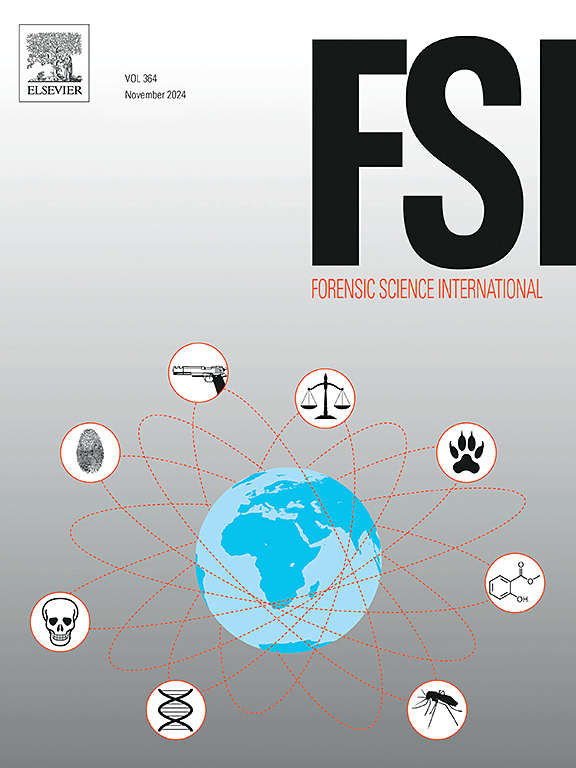MicroRNA transcriptome analysis for post-mortem interval estimation
IF 2.2
3区 医学
Q1 MEDICINE, LEGAL
引用次数: 0
Abstract
Estimating the post-mortem interval (PMI) is a critical aspect of forensic science; however, current methods often lack precision because of the variability in external and internal factors. This study investigated the potential use of microRNAs (miRNAs) as stable molecular biomarkers for PMI estimation. We analysed the miRNA expression profiles in myocardial tissue from 18 BALB/c mice sampled at six PMIs (0, 12, 24, 36, 48 h, and 6 d) using high-throughput sequencing and qRT-PCR. In total, 154 differentially expressed (DE) miRNAs were identified, of which 55 were upregulated and 99 were downregulated. Five upregulated (miR-206–3p, miR-200a-3p, miR-205–5p, miR-200b-3p, miR-429–3p) and four downregulated (miR-541–5p, miR-455–3p, miR-30c-5p, and miR-149–5p) apoptosis-related miRNAs were validated through qRT-PCR analysis, indicating their potential as supportive biomarkers in PMI estimation. Gene ontology analysis revealed their involvement in processes such as cardiac muscle cell proliferation, nuclear migration, and miRNA metabolic regulation. Linear regression models demonstrated significant correlations between specific miRNA expression levels and the PMI. These findings provide a molecular basis that may contribute to improving PMI estimation accuracy and supporting forensic methodologies.
MicroRNA转录组分析用于估计死后时间间隔
估计死亡间隔(PMI)是法医科学的一个关键方面;然而,由于外部和内部因素的可变性,目前的方法往往缺乏精度。本研究探讨了microRNAs (miRNAs)作为评估PMI的稳定分子生物标志物的潜在用途。我们使用高通量测序和qRT-PCR分析了在6个PMIs(0、12、24、36、48 h和6 d)取样的18只BALB/c小鼠心肌组织中的miRNA表达谱。总共鉴定出154个差异表达(DE) mirna,其中55个上调,99个下调。通过qRT-PCR分析验证了5个上调的(miR-206-3p, miR-200a-3p, miR-205-5p, miR-200b-3p, miR-429-3p)和4个下调的(miR-541-5p, miR-455-3p, miR-30c-5p和miR-149-5p)凋亡相关的mirna,表明它们可能作为PMI估计的支持生物标志物。基因本体论分析显示,它们参与心肌细胞增殖、核迁移和miRNA代谢调节等过程。线性回归模型显示特异性miRNA表达水平与PMI之间存在显著相关性。这些发现提供了分子基础,可能有助于提高PMI估计的准确性和支持法医方法。
本文章由计算机程序翻译,如有差异,请以英文原文为准。
求助全文
约1分钟内获得全文
求助全文
来源期刊

Forensic science international
医学-医学:法
CiteScore
5.00
自引率
9.10%
发文量
285
审稿时长
49 days
期刊介绍:
Forensic Science International is the flagship journal in the prestigious Forensic Science International family, publishing the most innovative, cutting-edge, and influential contributions across the forensic sciences. Fields include: forensic pathology and histochemistry, chemistry, biochemistry and toxicology, biology, serology, odontology, psychiatry, anthropology, digital forensics, the physical sciences, firearms, and document examination, as well as investigations of value to public health in its broadest sense, and the important marginal area where science and medicine interact with the law.
The journal publishes:
Case Reports
Commentaries
Letters to the Editor
Original Research Papers (Regular Papers)
Rapid Communications
Review Articles
Technical Notes.
 求助内容:
求助内容: 应助结果提醒方式:
应助结果提醒方式:


